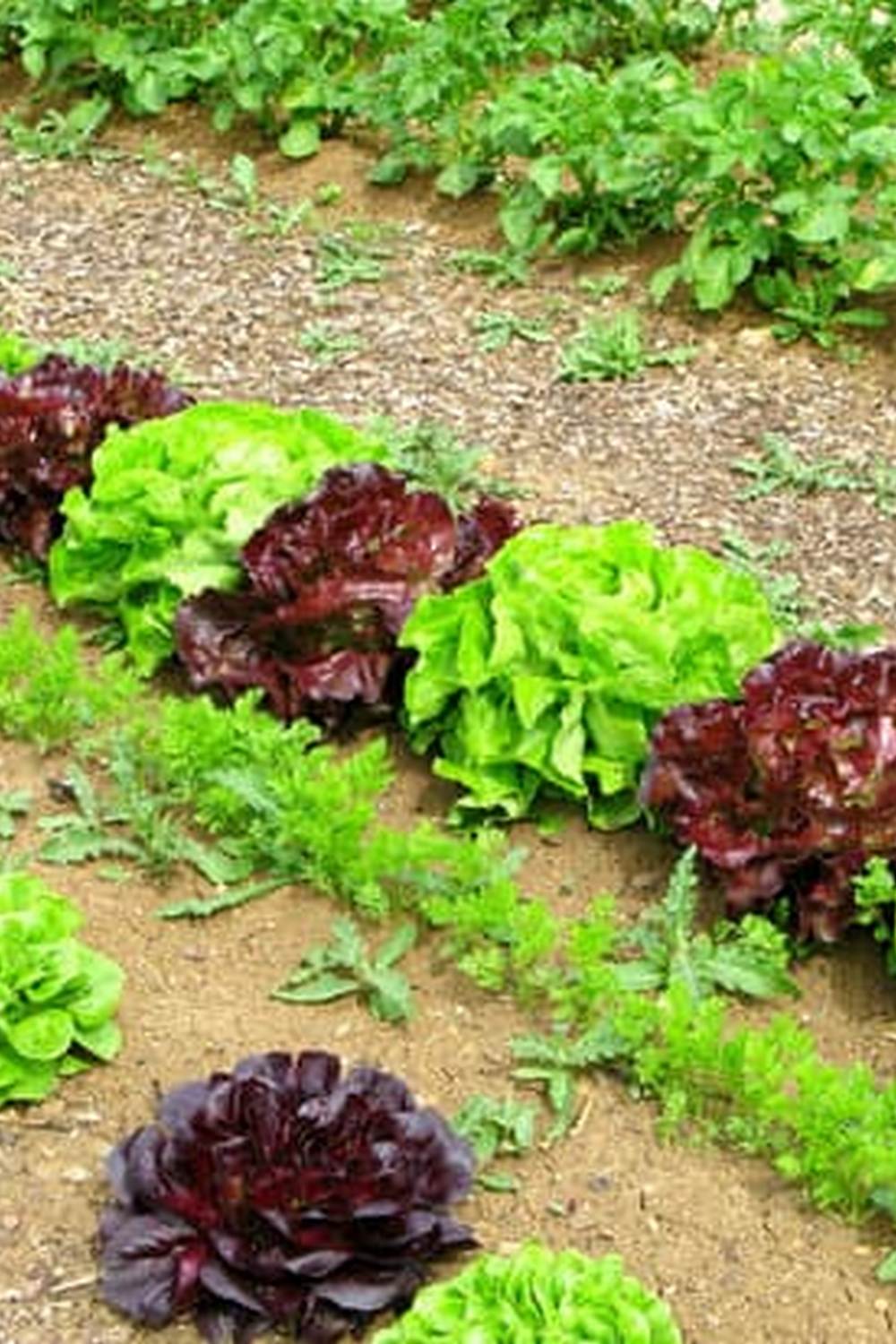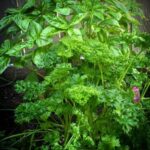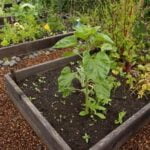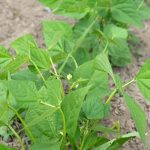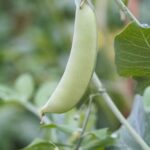Loam soil is a well-balanced combination of sand, silt, and clay, making it one of the best soil types for gardening. So, is loam good for vegetable gardens? The answer is a resounding yes. Its unique composition provides the perfect environment for vegetables to thrive and produce abundant yields.
Characterized by its ability to retain moisture while also allowing for proper drainage, loam soil creates a stable foundation for vegetable plants to develop strong root systems. This balanced moisture retention prevents waterlogged conditions that can lead to root rot, while also ensuring that plants have access to essential nutrients in the soil.
In this article, we will delve into the various characteristics of loam soil, explore the numerous benefits it offers for vegetable gardens, discuss how to identify if your soil is loam, provide tips on amending your soil with loam, highlight the best vegetables to grow in loam soil, and compare loam soil to other types for vegetable gardening. By the end of this comprehensive guide, you will understand why loam soil is considered ideal for cultivating a thriving vegetable garden.
Characteristics of Loam Soil
Loam soil is considered to be one of the best soil types for vegetable gardens due to its unique characteristics that promote healthy plant growth and development. One key characteristic of loam soil is its balanced mixture of sand, silt, and clay particles, making it well-draining yet moisture-retentive. This balance allows for proper aeration, root penetration, and nutrient retention, creating an ideal environment for vegetables to thrive.
Another important characteristic of loam soil is its ability to hold nutrients effectively, providing essential elements for plant growth. This nutrient-rich quality helps vegetables in loam soil to grow vigorously and produce high yields. Additionally, the pH level of loam soil is typically neutral, which is suitable for a wide variety of vegetable crops.
The texture of loam soil also plays a significant role in supporting healthy vegetable growth. Its granular structure allows for good root development and easy cultivation.
Whether you are planting root vegetables like carrots and potatoes or leafy greens like lettuce and spinach, loam soil provides the necessary support for strong root systems and robust plant growth. In conclusion, the balanced composition of sand, silt, and clay particles in loam soil makes it an excellent choice for growing a diverse range of vegetables in your garden.
| Characteristics | Benefits |
|---|---|
| Well-balanced mixture of sand, silt, and clay | Promotes healthy plant growth |
| Effective nutrient retention | Supports vigorous growth and high yields |
| Granular texture | Facilitates strong root development |
Benefits of Using Loam Soil in Vegetable Gardens
Loam soil is considered by many gardeners to be one of the best types of soil for vegetable gardens. This type of soil is a balanced combination of sand, silt, and clay, offering the benefits of each component without the drawbacks.
One of the main advantages of using loam soil in your vegetable garden is its excellent drainage properties. Excess water can easily drain away from the roots, preventing issues like root rot and waterlogged soil that can stunt plant growth.
Additionally, loam soil has a great ability to retain moisture, providing plants with a consistent water supply even during dry periods. This is crucial for vegetable plants as they require a steady source of moisture to thrive and produce healthy yields. The balanced texture of loam also allows for easy root penetration and uptake of nutrients, ensuring that your vegetables have access to the essential elements needed for optimal growth.
Moreover, loam soil is rich in organic matter which supports beneficial microbial activity in the soil. This helps to break down nutrients and make them more available to plants, promoting overall plant health and vitality.
When compared to other types of soil, loam offers an ideal environment for vegetables to grow successfully and produce high-quality fruits and vegetables. Its versatility and suitability for a wide range of crops make it a popular choice among gardeners looking to maximize their harvests.
How to Identify if Your Soil Is Loam
Loam soil is known for its ideal composition for plant growth, making it a popular choice for vegetable gardens. But how can you determine if your soil is indeed loam? Here are some key characteristics to look out for when identifying loam soil:
- Texture: Loam soil has a balanced mixture of sand, silt, and clay particles. When you pick up a handful of loam soil, it should feel crumbly and hold its shape when squeezed, but also break apart easily.
- Color: Loam soil typically has a dark color due to the high organic matter content. This dark color indicates good fertility and nutrient availability for plants.
- Drainage: Loam soil is well-drained but retains moisture well. If your soil drains quickly but doesn’t dry out too fast, it could be an indicator of loam composition.
If you observe these characteristics in your garden soil, there’s a good chance that it is loam. However, the best way to confirm this is by conducting a simple soil test.
- Soil Test Kits: You can purchase a DIY soil test kit from your local gardening store or send a sample to a professional lab for analysis. These tests will provide detailed insights into the composition of your soil, including whether it is predominantly loam.
- Observation: Another way to identify if your soil is loam is through observation of plant growth. If you notice healthy vegetation, good drainage, and minimal compaction in your garden beds, it could be an indication of loamy soil.
- Consulting Experts: If you’re still unsure about the composition of your soil or need help interpreting the results of a soil test, consider consulting with agricultural extension services or local gardening experts for guidance.
Testing Your Soil for Loam Content
If you are considering using loam soil for your vegetable garden, it is essential to first identify whether your existing soil is indeed loam. Here are some methods to help you determine the content of your soil:
1. Visual Inspection: One way to determine if your soil is loam is by visually inspecting it. Loam soil typically has a dark, rich color and a crumbly texture that holds together well when squeezed. It should feel soft and not too sandy or clay-like.
2. Jar Test: Another method to test for loam content is by conducting a simple jar test. Fill a clear jar with water and add a handful of soil from your garden. Shake the jar vigorously to mix the soil with water and then let it settle. The different layers that form as the soil settles can give you an idea of the composition of your soil.
3. pH Testing: Testing the pH level of your soil can also provide clues about its composition. Loam soils are generally close to neutral pH, which is ideal for most vegetable plants. You can use a simple pH testing kit available at gardening stores to check this.
By utilizing these methods, you can accurately assess whether your soil is loam and make informed decisions on how to amend it for optimal vegetable growth. Remember that loam soil provides a well-balanced environment for plants with good drainage and moisture retention properties, making it an excellent choice for vegetable gardens.
Tips for Amending Your Soil With Loam
One of the key factors that contribute to a successful vegetable garden is the quality of the soil. Loam soil, known for its balanced combination of sand, silt, and clay, is highly regarded as an ideal option for vegetable gardens. Its nutrient-rich composition and excellent drainage make it a favorite among gardeners looking to optimize their crop yield.
Benefits of Amending Your Soil With Loam
Amending your existing soil with loam can provide various benefits for your vegetable garden. Loam soil helps improve water retention, ensuring that your plants receive adequate moisture without becoming waterlogged. Additionally, its well-balanced texture allows for proper aeration, promoting root growth and overall plant health. By incorporating loam into your garden bed, you can create a fertile environment that supports robust vegetable growth throughout the growing season.
Methods for Incorporating Loam Into Your Soil
There are several effective ways to amend your soil with loam. One common approach is to mix loam into your existing soil at a ratio that suits the needs of your vegetables. You can also create raised beds filled with a mixture of loamy soil to provide optimal growing conditions for your plants.
Another method is top-dressing your garden bed with a layer of loam to enhance its structure and fertility over time. Regardless of the technique you choose, incorporating loam into your soil can significantly improve the productivity and health of your vegetable garden.
Best Vegetables to Grow in Loam Soil
When it comes to vegetable gardening, choosing the right soil type is crucial for successful and thriving produce. Loam soil is often considered one of the best choices for vegetable gardens due to its balanced composition of sand, silt, and clay. This ideal combination provides good drainage, ample nutrients, and the ability to retain moisture – making it a perfect medium for growing a wide variety of vegetables.
One of the main reasons why loam soil is good for vegetable gardens is its ability to provide plants with the necessary nutrients they need to grow and thrive. The balanced texture of loam allows for easy root penetration, ensuring that roots have access to both water and essential minerals. Additionally, the good drainage properties of loam prevent waterlogging, which can lead to root rot in vegetables.
For gardeners looking to get the most out of their vegetable garden, growing certain types of vegetables in loam soil can be particularly advantageous. Vegetables such as tomatoes, peppers, cucumbers, carrots, lettuce, and beans are known to flourish in loam soil due to its nutrient-rich content and excellent drainage. These plants not only benefit from the well-balanced structure of loam but also produce bountiful harvests when grown in this type of soil.
| Vegetable | Benefits in Loam Soil |
|---|---|
| Tomatoes | Thrive in nutrient-rich loam with good drainage; |
| Peppers | Better growth and fruit production in balanced loamy soil; |
| Lettuce | Benefit from moisture retention properties of loamy soil; |
Comparing Loam Soil to Other Soil Types for Vegetable Gardening
When it comes to vegetable gardening, the type of soil you use can significantly impact the success of your crops. Loam soil is often considered one of the best soil types for vegetable gardens due to its ideal combination of sand, silt, and clay. But how does loam soil compare to other soil types commonly used in gardening?
Comparison to Sandy Soil
Sandy soil is known for its large particles and excellent drainage properties. While this may be beneficial for some plants, it can also lead to nutrient leaching and water retention issues in vegetable gardens. Loam soil, on the other hand, offers better water retention and nutrient availability due to its balanced texture. This makes loam soil a preferred choice for many vegetable gardeners.
Comparison to Clay Soil
Clay soil is made up of tiny particles that hold onto water and nutrients tightly, making it dense and prone to compaction. While clay soil has its advantages, such as good nutrient retention, it may not be as suitable for vegetable gardens as loam soil. The well-draining nature of loam soil allows for sufficient water and air movement within the root zone, promoting healthier plant growth.
Comparison to Silt Soil
Silt soil falls somewhere between sand and clay in terms of particle size and texture. While silt soil can be fertile and hold onto moisture well, it may lack proper drainage capabilities for some vegetables. Loam soil provides a balance between water retention and drainage that is essential for growing a wide variety of vegetables successfully. Ultimately, choosing loam soil over other types can lead to better yields and healthier plants in your vegetable garden.
Conclusion
In conclusion, it is evident that loam soil holds a crucial position in the realm of vegetable gardening. Its balanced composition of sand, silt, and clay provides an ideal environment for plant roots to thrive, ensuring adequate drainage, moisture retention, and nutrient availability. This makes loam soil a versatile and fruitful option for cultivating a wide variety of vegetables.
The benefits of using loam soil in vegetable gardens are extensive. Not only does it promote robust plant growth and higher yields, but it also enhances the overall health of the garden ecosystem. By providing a stable foundation for root development and ensuring proper aeration, loam soil supports plant resilience against environmental stressors such as drought or excessive rainfall. Additionally, its nutrient-rich content reduces the need for frequent fertilization, making it a cost-effective choice for gardeners.
In summary, if you are wondering whether loam soil is good for vegetable gardens, the resounding answer is yes. Its unique combination of properties makes it an ideal medium for growing a plethora of vegetables successfully. By incorporating loam soil into your gardening practices and selecting suitable crops that thrive in this type of soil, you can create a flourishing vegetable garden that will yield bountiful harvests year after year.
Frequently Asked Questions
What Are the Disadvantages of Loam Soil?
The disadvantages of loam soil include its ability to retain too much moisture, leading to waterlogged conditions that can harm plants. Additionally, loam soil may be susceptible to compaction, which can restrict root growth and decrease plant productivity.
What Soil Is Best for a Vegetable Garden?
The best soil for a vegetable garden is one that is rich in organic matter, well-draining, and nutrient-dense. Loamy soil, which is a mixture of sand, silt, and clay, is often considered ideal for growing vegetables as it provides a balance of drainage and moisture retention necessary for healthy plant growth.
Is Loam Better Than Topsoil for Gardening?
Whether loam is better than topsoil for gardening depends on the specific needs of the plants being grown. While topsoil may lack some of the beneficial properties of loam soil, such as good drainage and fertility, it can still be suitable for certain types of plants or garden projects.
Ultimately, the choice between loam and topsoil should be based on factors such as plant requirements and soil conditions.

If you’re looking to get into vegetable gardening, or are just looking for some tips on how to make your current garden better, then you’ve come to the right place! My name is Ethel and I have been gardening for years. In this blog, I’m going to share with you some of my best tips on how to create a successful vegetable garden.

